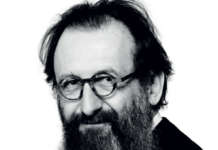The UK capital is set to offer a spring season of nonstop cultural events on architecture and the arts of the project, hosting several important exhibitions in its most prestigious museums.
The first anniversary of the fire that damaged the Glasgow School of Art, will mark the opening of the exhibition Mackintosh Architecture at the renovated galleries of the Royal Institute of British Architects, in Portland Place, up to the 23rd May 2015. Billed as the first major retrospective of the work of the Scottish architect, artist and designer Charles Rennie Mackintosh, the exhibition features 60 original drawings and watercolours, as well as models, films and portraits. Designer of exceptional talent, Mackintosh began his architectural apprenticeship at the age of 16, and took evening classes at the Glasgow School of Art before proposing, at the age of 29, the project for the School itself, subsequently built between 1897 and 1909. The exhibition also illustrates the context in which Mackintosh worked: the city of Glasgow, opportunities and clients; his apprenticeship and the beginning of his collaboration in an architectural studio, his independent work as architect and designer; the inspiration he drew from the tradition of Scottish baronial architecture and the collaboration with his wife, the artist and designer Margaret Macdonald. The London exhibition, curated by Susan Pugh of Riba Drawings and Archives, is ideally completed with a programme of events at the Riba and with a visit to the homonymous exhibition curated by Pamela Robertson at the Hunterian Art Gallery in Glasgow, also responsible for four years of research that has involved the gathering and cataloguing of Mackintosh’s work, as well as making it available online.
In a room of the Architecture Gallery of the Victoria and Albert Museum, the temporary exhibition, Architects as Artists, curated by Roisin Inglesby, starts by quoting Leon Battista Alberti and Edward William Godwin, in questioning the boundary between architecture and art, and illustrating exemplary cases in which the architect expressed himself according to artistic canons. Through nearly 50 drawings from the collection of Riba and the V & A, the short but precious exhibition offers a reflection on the artistic tools available to architectural practice. The works are classified according to the categories “representation“, “exploration of places“, “presentation“ and “imagination“, drawings by Raphael, E.W. Godwin, Hugh Casson, Cyril Potenza, Virgilio Marchi, Iakov Chernikhov, Tom Noonan, William Burges, Augustus Pugin, FAT Architecture, Alfred Waterhouse and William Walcot. Each experiment illustrates the architects’ ability in defining two-dimensional architectural space, the importance of drawing from real life and the field study of historic buildings and landscapes, expressive properties and the adoption of pictorial conventions in communicating with customers or the public.
A short distance away, in Kensington Gardens, from the 26th June until the 18th October 2015, you can visit the fifteenth Serpentine Gallery Pavilion, designed by Spanish studio Selgascano and its architects José Selgas and Lucía Cano. According to annual custom, about six months before the inauguration, the project is entrusted, upon invitation, to an internationally renowned architect who has not yet created a building in the UK, but this year there will be an exception to the rule; in fact the Spanish architects had already made themselves known in London last November, owing to the sensational success of the renovation of Second Home’s offices, in a former carpet factory just off Brick Lane in Shoreditch. Prior to them, on the lawn beside the pavilion for the 1930s which hosts the Serpentine Gallery, architectural experiments have been carried out by the likes of Smiljan Radic, Sou Fujimoto, Herzog & de Meuron and Ai Weiwei, Peter Zumthor, Jean Nouvel, Kazuyo Sejima and Ryue Nishizawa, Frank Gehry, Olafur Eliasson and Kjetil Thorsen, Rem Koolhaas and Cecil Balmond, Álvaro Siza and Eduardo Souto de Moura, MVRDV (not completed), Oscar Niemeyer, Toyo Ito, Daniel Libeskind, and Zaha Hadid. The appearance of the pavilion, which will house a café and events during the summer, has not yet been divulged, but Selgas, professor of design at the MIT in Boston, who favours nature over architecture, has promised “an absolutely experimental pavilion which will truly embrace the garden“.





